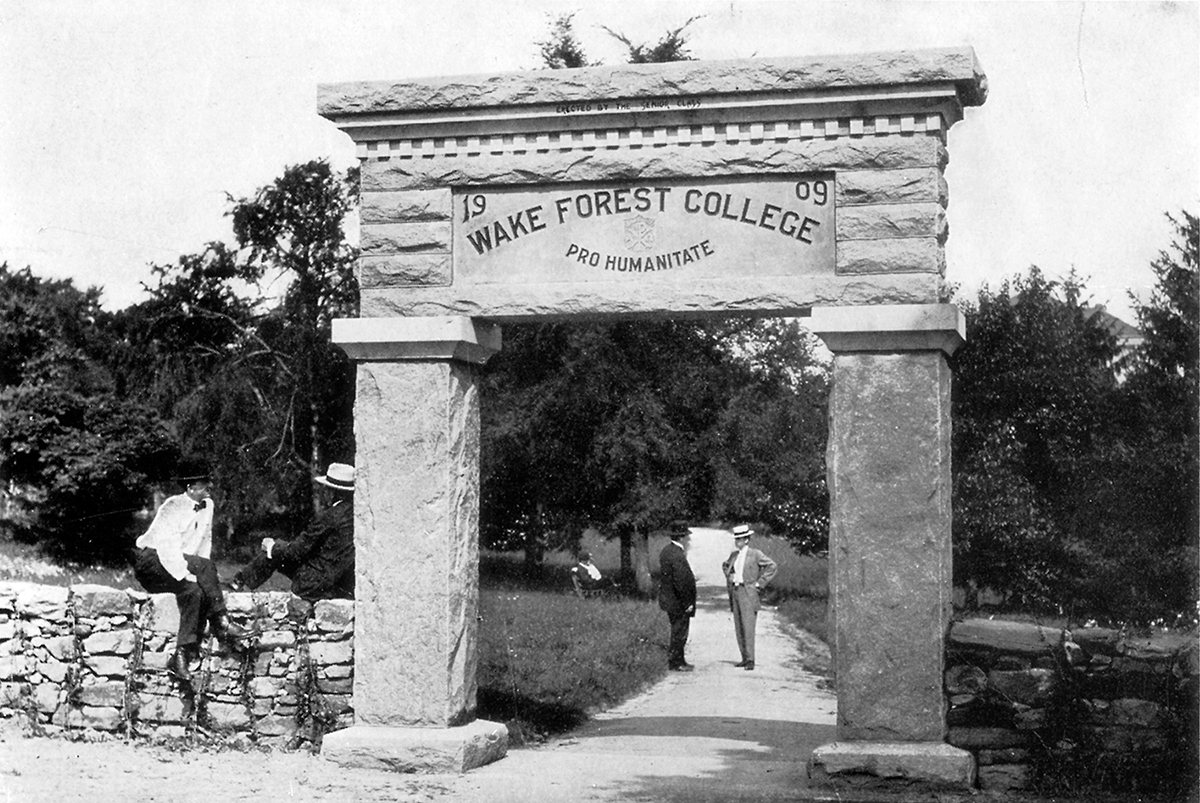Our Heritage Revisited
Horse High, Bull Strong, And Hog Tight

One of my favorite things about residing in Wake Forest is that nearly every day I get to drive by or walk through a campus surrounded by an old stone wall. Stones are living things to me and ever since childhood, I’ve gathered them from creek beds, tree laps, and neighbors’ driveways to carry home in hands and pockets. When friends go far away, I ask them to “bring me back a rock, please.” I can hold Canada, Scotland, England, France, Australia, and the Forum in Rome anytime I choose. Blowing Rock, Missoula, Baton Rouge, Swansboro, and Jackson all live with me still. Parading up my front
steps right now are nine smooth, round, oddly marked beach stones from Maine, special “friends” lovingly rescued from beneath piles of rubbish by a dear
neighbor years ago after an inward-traveling hurricane sheared off the front porch and southeast corner of my house. Wood and glass, fabric and living green … all were gone. But the stones lived on, whole and complete.
The “old campus” of Wake Forest College, now Southeastern Baptist Theological Seminary, beautiful as it is, would seem less stately without the 100-plus year old stone wall still defining its original boundaries. Understandably, it is the Arch that most people express a fondness for. But that grand welcomer would stand as an awkward sentinel without the thousands of dry-stacked stones meandering out and away from it to the four directions.
Construction was begun on the wall in 1885 during the administration of President Charles E. Taylor as part of his plan to “clear and beautify” the campus. Tom Jeffries, a custodian and groundskeeper who was employed by the college for nearly 50 years, is credited with building the wall. Born a slave in Virginia around 1850, Jeffries was called “Doctor” Tom by those who valued his work on campus, particularly his contributions as landscaper and unofficial student adviser. When Jeffries was called upon to replace the school’s fences with the 3000’ stone wall, instructions were to build it “horse high, bull strong, and hog tight” because, at that time, with professors’ salaries rather low, the school offered additional compensation by allowing them “the right to pasture their cows on the college grounds.”
A century exacts a toll, even on stone. By the mid 1980s, the wall was in need of major repair. In December of 1990, young seminarian Doug Buttram began the three-year process of rebuilding the wall from the ground up. He says he gave up more than once, but ultimately he just “couldn’t keep away from it. I was more miserable after I left than when I was there.” Along with the rest of the community, I watched him, even prayed for him, as he toiled on his knees day in and day out. When he wasn’t visible, I wondered about him. Was he all right? Had he quit? How was he holding up under the backbreaking work? And then, one day in 1994, it was finished.
Both Doug Buttram and Tom Jeffries are memorialized by bronze busts held in stone, Doug’s at the south entrance and Tom’s at the north. “I don’t think it is as amazing that I’ve rebuilt the wall as it is that it was ever built the first time,” Doug says. This writer would disagree; one feat seems to me as grand as the other. And I know that generations of Wake Foresters are grateful to both men for the testament to Earth and Heaven each has brought forth.
Special thanks to Jennifer Smart and Beverly Whisnant.
Amy Pierce
Lives in Wake Forest's Mill Village, where she is a writer, minister, and spiritual counselor.
- www.authenticself.us
- 919-554-2711

